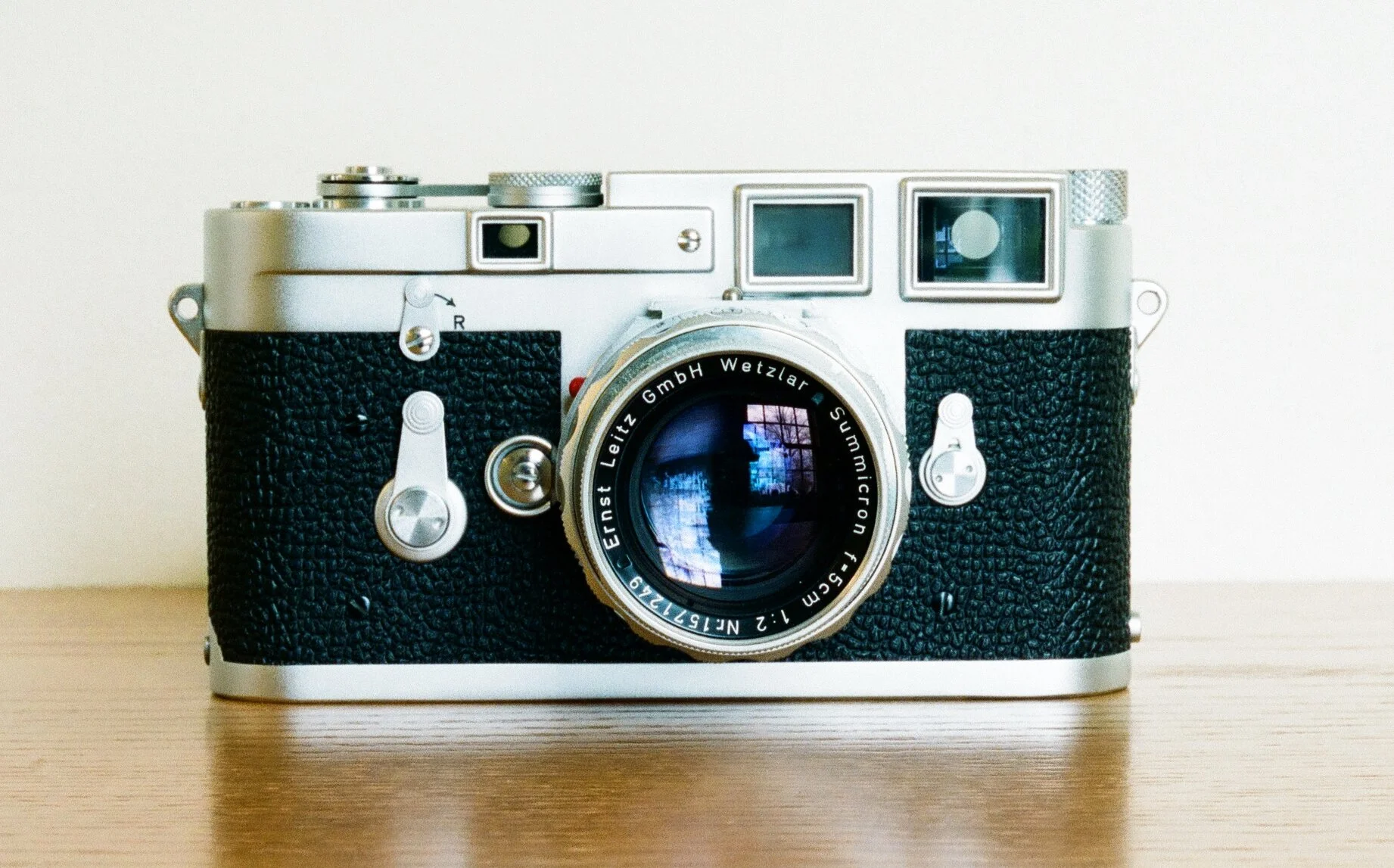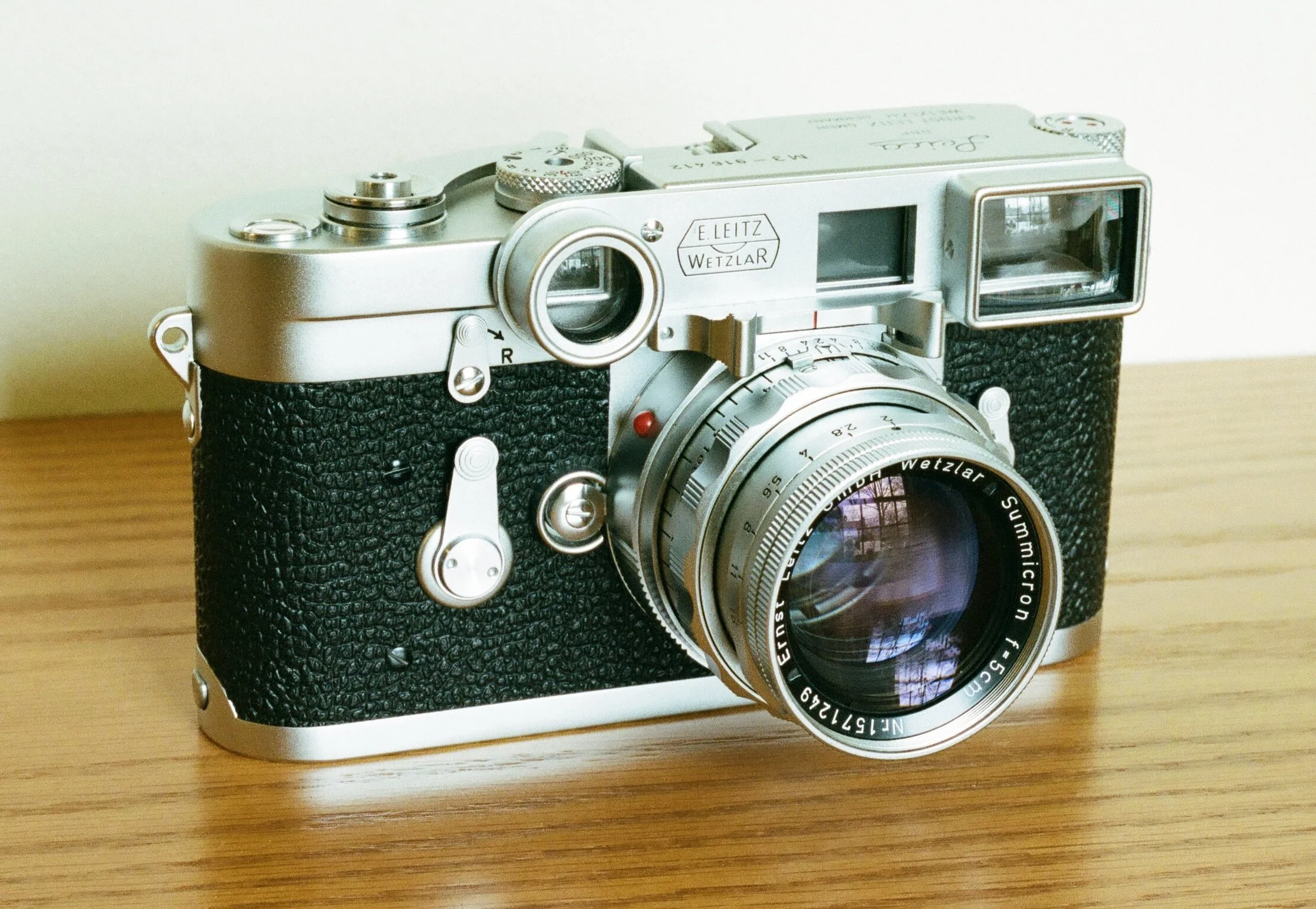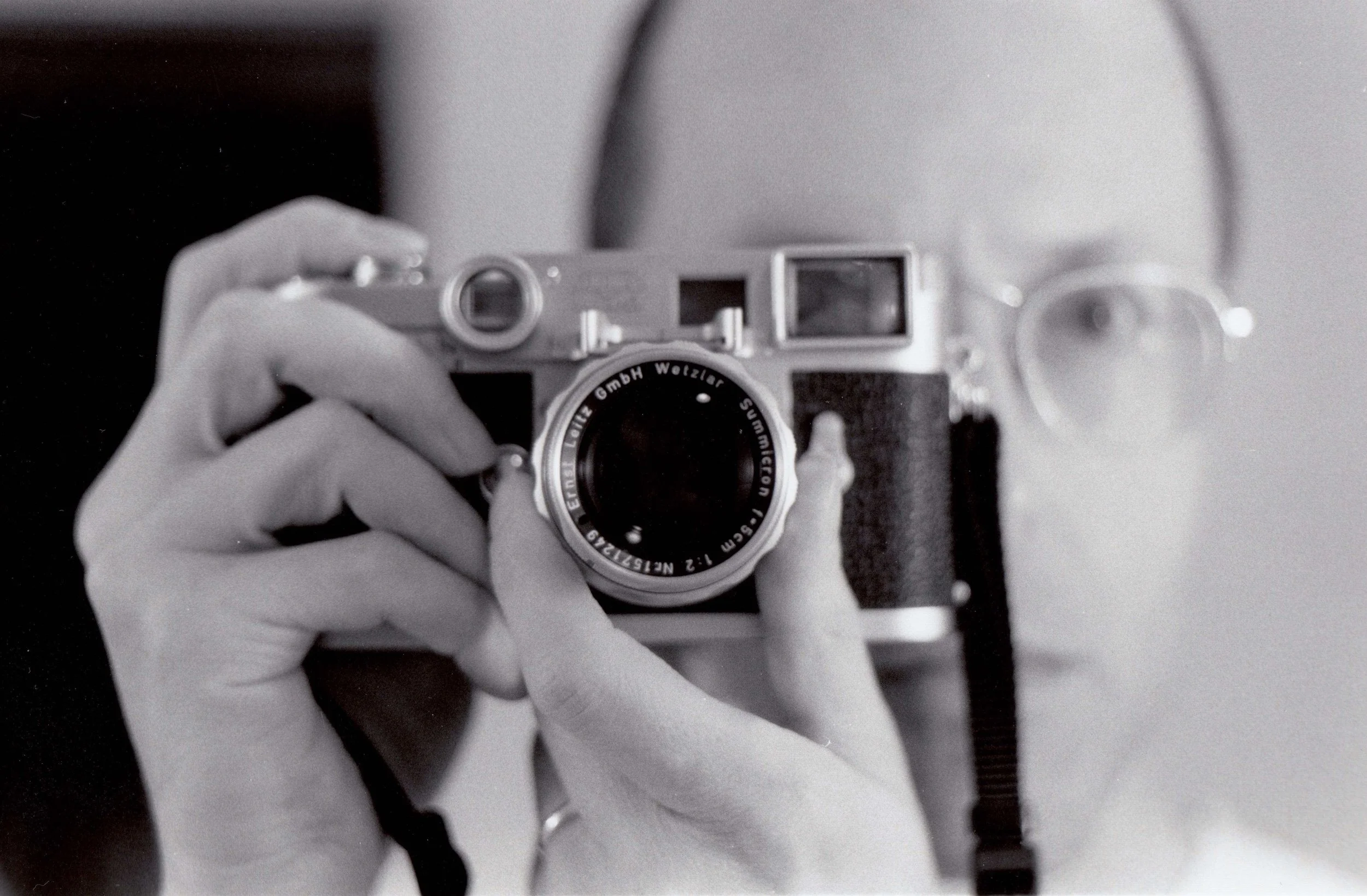Leica M3
Ultimate evolution of the Leica.
Leica M3 with 5cm f/2 dual range Summicron without the close focus attachment. (Color photos of the camera were made with a Nikon F, 55mm f/3.5 Micro-Nikkor-P.C, and Portra 400.)
On my list of the three most significant 35mm cameras
The Nikon F, the screw mount Leica, and the Leica M3 are strong candidates for ‘the three most important 35mm cameras ever made’. They were recognized as design landmarks upon introduction, and made many of the 20th century’s most influential images.
On the Tokyo subway. Leica M3, 5cm f/2 Dual Range Summicron, Tri-X, early 2000s.
The first redesign of the Leica
The screw mount Leica was the original. Developed from a 1913 prototype, its key design features were in place by 1931. Evolutionary improvements were made over the next 2+ decades, but the first complete redesign wasn’t until the 1954 introduction of the M3.
The M3 incorporated a long list of improvements including a bayonet lens mount, an oddly-designed partial door in the back for easier film loading, one eyepiece for both the range finder and viewfinder, a bright line system that automatically frames for the 90mm and 135mm lenses, a lever film winder, and a threaded shutter button that accepts standard cable releases. These are practical, useful improvements.
One of the new lenses for the M3 was the 50mm f/2 Dual Range Summicron. It focuses down to a half meter. To get into the ‘close’ range, you clip on a close focus attachment. It sounds like a kludge but it’s not — it works very smoothly.
Leica M3 with 5cm f/2 dual range Summicron, with the close focus attachment.
The ultimate evolution of the Leica
I nominate the M3 as the best-designed M-series Leica:
Later M-series cameras incorporate added features that I do not need such as on-board light metering. For those (like me) who use a hand-held light meter, that adds complexity without adding functionality.
On many later models including the M6, aesthetics were compromised by (1) the rewind lever positioned on the corner of the camera at an awkward angle, (2) omission of the cursive ‘Leica’ engraving on the top deck, (3) an uninspired red dot logo on the front, and (3) a cheap-looking plastic tip on the film advance lever.
Finally, the M3 carries the classic ‘Ernst Leitz Wetzlar’ identification, like the screw mount cameras. Many later models don’t, due to a corporate name change to ‘Leica Camera’.
It seems my view is shared by others, as the company has a current model, the Leica M-A, which fixes most of the shortcomings cited above (see References).
Silhouette. (Roppongi, Tokyo) Leica M3, 50mm f/2 Dual Range Summicron, HP5+, c. 2003. Published in Natural Glow, No. 31, March/April 2004.
M3: not just a camera
The M3 name seems popular among German manufacturers. BMW has had an M3 in production since the 1980s.
Maintenance and repair
The shutter on my M3 is tapering; it needs a repair. That’s why I haven’t used this camera much lately.
References / further reading
Camera manual: orphancameras.com
More references:
Emanuel, W. D. 1957. Leica Guide: How to Work With All Leica Models from I to M3. New York: American Photographic Book Publishing Co., Inc.
p. 50: Lens element illustrations for then-current and discontinued lenses are shown. For example, you can see that the 5cm f/3.5 Elmar has four elements in three groups, similar to a Tessar.
Gustavson, T. 2011. 500 Cameras: 170 Years of Photographic Innovation. New York: Fall River Press. The 500 cameras are from the George Eastman House Technology Collection, Rochester, N.Y. The Leica M3 is on p. 258.
Hunt, B. 2024. Film Camera Zen: A Guide to Finding the Perfect Film Camera. Los Angeles: Chronicle Chroma.
Several M-series Leicas are featured and the M3 is on pp. 74-75. ‘They are built like a beautiful Mercedes 300 SL — so beautiful to look at and purposeful to use. It is said that if Leica wanted to recreate an M3 for the modern market, it would likely cost around fifteen thousand dollars.’
Instructions for the use of the Leica Camera Models M1, 2, 3, and 4. n.d. Ernst Leitz, Wetzlar. Reprinted by Hove Collectors Books, n.d.
Leica Photographic Equipment, Catalog No. 35. 1960. E. New York: Leitz Inc.
Leica M-P (Typ 127). Leica Camera. n.d. https://leica-camera.com/en-US/photography/cameras/m/m-a-typ-127-silver accessed Nov. 5, 2025.
This is Leica’s current retro-inspired M-series model, reflecting ongoing demand for the classic design. ‘The exterior of the Leica M-A is as timeless as the precision engineering hidden inside. For instance, the Leica red dot has been deliberately omitted to emphasise the classic restraint of its design as an ultimate expression of understatement.’
Matanle, I. 1986. Collecting and Using Classic Cameras. London: Thames and Hudson.
McKeown, J.M. and J.C. 1996. McKeown’s Price Guide to Antique and Classic Cameras, 1997-1998. Grantsburg, Wis.: Centennial Photo.
This has 14 pages on Leitz/Leica cameras and lenses, including a tabular guide to identification of the different models on p. 292 and a list of Leica serial numbers on pp. 293-297.
Morgan, W.D. and H.M. Lester. 1956. “Leica Manual and Data Book.” New York: Morgan & Morgan.
Pritchard, Michael. 2014. A History of Photography in 50 Cameras. Buffalo, N.Y.: Firefly Books. The Leica M3 is camera no. 34.
Rogliatti, G. 1985. Leica: The First 70 Years. East Sussex, England: Hove.
Mirror self portrait. Leica M3, 5cm f/2 Dual Range Summicron, Tri-X, early 2000s.




